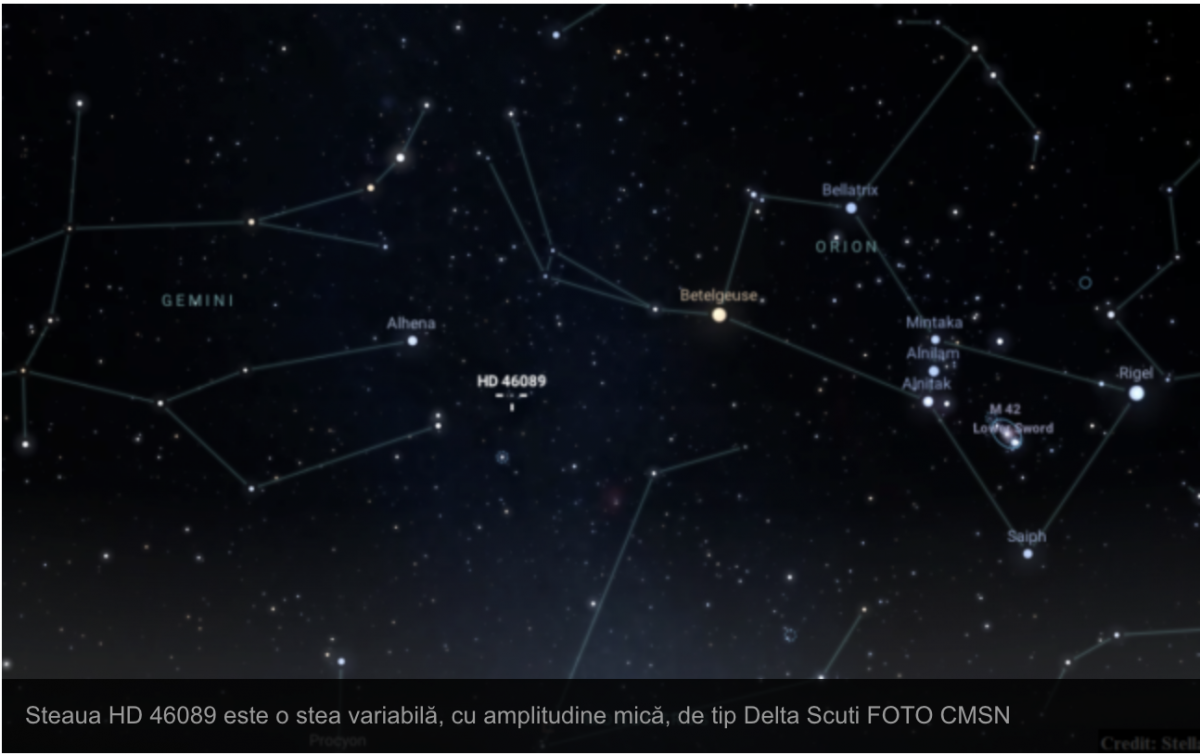Galati Astronomical Observatory, Romania, December 2020--The November discovery of the variability of star HD 46089, which is visible to the naked eye, is the most important one made by the Galati Astronomical Observatory because until now, it was thought that all the bright variable stars must have already been discovered.
It is very difficult to perform photometry of very bright stars, so at the Galati Astronomical Observatory, a new observing technique was created using the Ritchey-Chretien f/8 with the main mirror's diameter 400mm, and SBIG STL-6303E CCD camera.

The newly discovered HD 46089 in the Monoceros constellation can be easily seen with the naked eye at the magnitude of around 5.2. The star is a low amplitude variable of Delta Scuti type (DSCT). The period of variability is around 1.21 hours. For the analysis, both V and B filters made in the course of two nights were used, in addition to Hipparcos data.
The HD 46089 data were reported to the American Association of Variable Star Observers (AAVSO) and accepted into their Internațional Variable Star Index (VSX). The team who made this discovery possible is composed of Ovidiu Tercu, the coordinator of the Galati Astronomical Observatory, and Gabriel Neagu, member of the “Calin Popovici” Astroclub—the main educational program of the Planetarium/Astronomical Observatory. One of the goals of this research collaboration with the “Calin Popovici” Astroclub is education through variable star science.
The data entry of the variable star is at VSX : Detail for HD 46089
The VSX home page is available at https://www.aavso.org/vsx/index.php
This is a brief English translation of Galati Astronomical Observatory’s press release. The full original version in Romanian, is available here.

